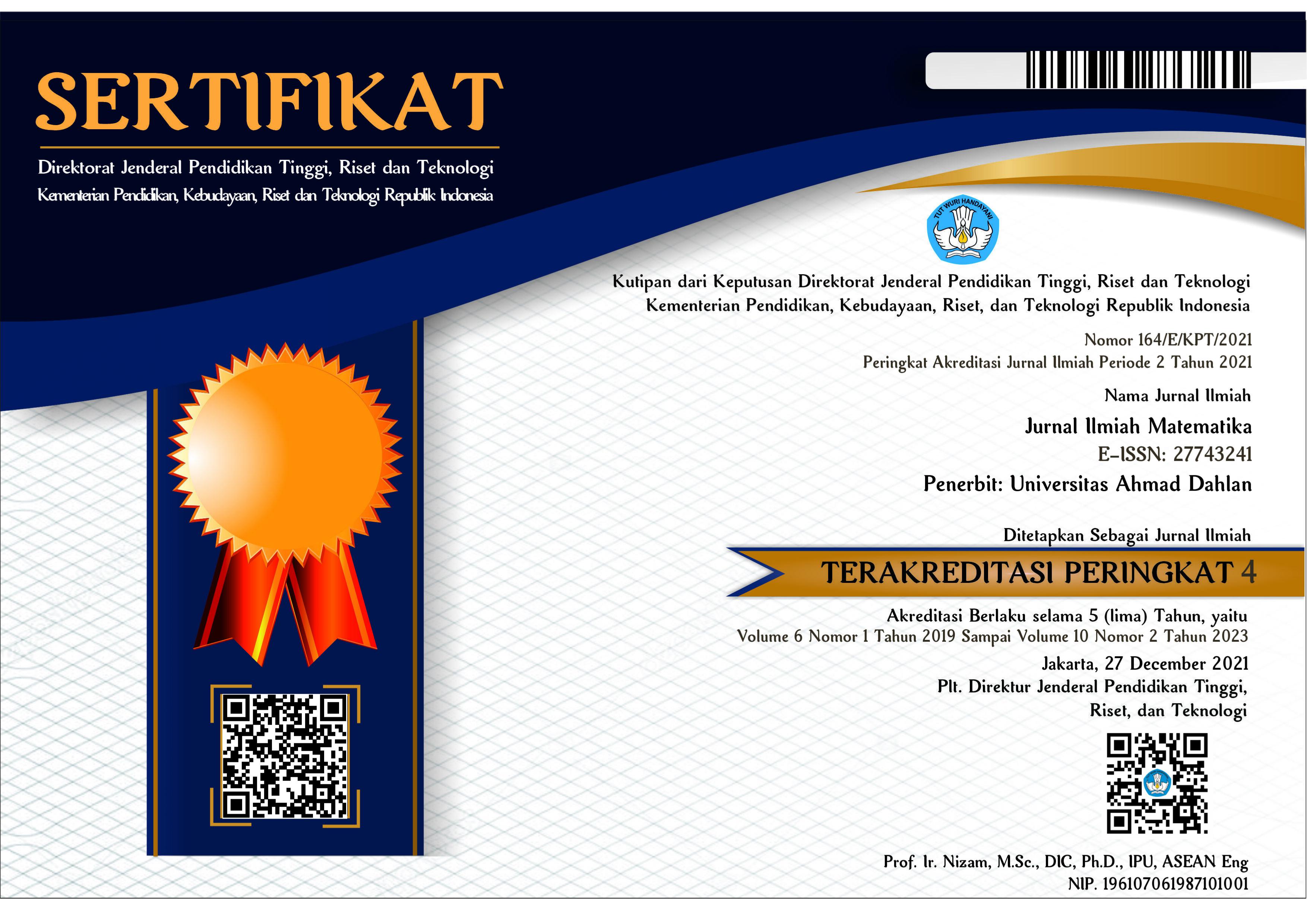Forecasting Tourist Visit Using the Vector Autoregressive Exogenous Method (VARX)
DOI:
https://doi.org/10.26555/konvergensi.v7i2.19608Keywords:
Keywords, Fuzzy, Time Series, Forecasting, Traveler, Calendar Effects, Vector Autoregressive, Exogenous (VARX), MAPEAbstract
Forecasting is an activity to predict what will happen in the future by paying attention to information from the past and the present. A regression model that explains the past movement of the variable itself and also all other variables without distinguishing which endogenous and exogenous variables are called Vector Autoregressive (VAR). But in practice, endogenous variables are supported by exogenous variables. The Vector Autoregressive Exogenous (VARX) model is a development of the VAR with the addition of exogenous variables. The purpose of this study is to form the best model in the VAR method with the addition of an exogenous variable in the form of an effect calendar for forecasting the number of tourists coming to the Special Region of Yogyakarta (DIY). The data used in this study are time series data for 10 years from January 2009 to December 2018 in the form of tourist visit data in the Special Region of Yogyakarta (DIY). The results obtained indicate that the effect calendar variable that affects tourist visitor data in DIY is at Christmas. After being analyzed using MAPE, the best model is the VARX (1.0) model which produces a smaller. So, it can be concluded that the VARX model with the addition of an effects calendar is suitable for predicting tourist visitsReferences
Chang, P.C., Wang, Y.W., dan Liu, C.H. 2007. The Development of a Weighted Evolving Fuzzy Neural Network. Expert System With Application.
Gujarati, D., dan Portner, D.N. 2003. Basic Econometrics: Dasar-dasar Ekonometrika Edisi 5. Alih Bahasa Raden Carlos M. Jakarta: Salemba Empat.
Gujarati, Damodar. 2004. Basic Econometrics. New York: McGraw-Hill.
Makridakis, McGee, dan Wheelright. 1999. Introduction to Time Series Analysis and Forecasting. Hoboken, New Jersey: Willey.
Nachrowi, D.N., dan Usman, H. 2004. Teknik Pengambilan Keputusan. Grasindo: Jakarta.
Ocampo, S., dan Rodriguez, N. 2011. An Introductory Review of a Structural VAR-X Estimation and Applications. Borradores de Economia.
Wei, W.W.S. 1990. Time Series Analysis. Addison Wesley: New York.
Wei, W.W.S. 2006. Time Series Analysis Univariate and Multivariate Method 2ed. New York: Pearson Education.
Durbin, J., & Koopman, S. J. (2012). Time series analysis by state space methods. Oxford university press.
Widoarjono, A. 2007. Ekonometrika Teori dan Aplikasi untuk Ekonomi dan Bisnis. Edisi Kedua Yogyakarta: Fakultas Ekonomi UII.
Downloads
Published
Issue
Section
License
Authors who publish with this journal agree to the following terms:
1. Authors retain copyright and grant the journal right of first publication with the work simultaneously licensed under a Creative Commons Attribution License that allows others to share the work with an acknowledgment of the work's authorship and initial publication in this journal.
2. Authors are able to enter into separate, additional contractual arrangements for the non-exclusive distribution of the journal's published version of the work (e.g., post it to an institutional repository or publish it in a book), with an acknowledgment of its initial publication in this journal.
3. Authors are permitted and encouraged to post their work online (e.g., in institutional repositories or on their website) prior to and during the submission process, as it can lead to productive exchanges, as well as earlier and greater citation of published work.

This work is licensed under a Creative Commons Attribution-ShareAlike 2.0 Generic License.









